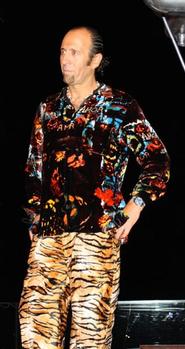Fernando Aguerre, the President of the International Surfing Association (ISA) recently met with International Olympic Committee (IOC) President Jacques Rogge in Switzerland.
Fernando has been trying to get surfing into the Olympics through the ISA for over a decade and the last year and a half has become even more active in making this a reality.
At the meeting, Fernando said he talked about his favorite sport and brought along gifts including original rare photos of Duke Kahanamoku and a signed copy of The Surfing Yearbook, published by Surfersvillage.
A key part of the meeting was a discussion about the development of man-made waves, which Fernando said would be necessary to make a solid case for the inclusion of surfing into the Olympics.
The concept of quality man-made waves is a recent development. Until recently, man-made waves were basically static, like the Flowriders located in places like Santiago, Chile and in San Diego, Calif. Fernando envisions a much more advanced wave for the Olympics. “It will just be like one in the ocean. It will be in deep water, moving, it will have a tube, and it will break for about 100 yards,” he said.
As a result of this technology there will be more consistent waves throughout all competitions, and the influence of the “luck factor” in competitor scores will be diminished, he added. It also allows for competitions to be held at places where there is no ocean.
Fernando said the ISA is aware of at least five groups who are very advanced in their progress towards making these sophisticated man-made waves a reality.
While he did not leave Switzerland with a definite yes that surfing will indeed be included in future Olympic games, he left “realistically optimistic,” as Fernando said.
The IOC President told him the three essential topics needed for surfing to be included in the Olympics are: universality and visibility, a solid judging process, and man-made waves.
As for universality, Fernando said with over 25 million participants in the sport, an increasing rate of female participation, and a wide array of surfers across all races and ages, surfing definitely meets their first criteria.
He also feels strongly that the judging process is solid, especially since in 2008, the ISA started using eight judges versus five as they used in previous years.
“The only missing piece are consistent, good quality waves on-demand,” he said.
“Once the man-made waves are in place, the case for Olympic surfing will be very solid and appealing.”
Next year, the IOC will start the selection process for the sports program of the 2020 Olympic Games. In 2013 they will make the final decision of what new sports, if any, will be included. Fernando and the ISA will continue to campaign for Olympic surfing.






